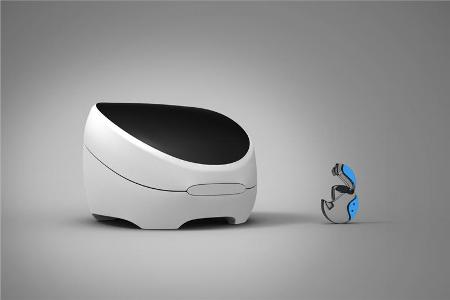Nov 6 2012
The Norwegian company SpinChip aims to help doctors analyse patients’ blood samples on the spot and provide immediate results.
 In SpinChip, the blood sample is drawn directly from the patient’s fingertip into small analytical chips that are placed in a microcentrifuge
In SpinChip, the blood sample is drawn directly from the patient’s fingertip into small analytical chips that are placed in a microcentrifuge
Early, correct diagnoses are often of decisive importance in hindering the development of serious ailments. The results of analyses of patient samples (blood, urine, etc.) can be an important element diagnosing illnesses. In most cases, such samples must be sent to a laboratory for analysis, with the result that important information may not be available at the start of treatment.
Doctors’ surgeries are already equipped with a number of analytical instruments, but their range of applications is extremely limited. There is need for a compact, robust, reliable but highly sensitive machine that can perform a wide range of analyses, but is not too expensive.
Advanced microfluidics
In SpinChip, the blood sample is drawn directly from the patient’s fingertip into small analytical chips that are placed in a microcentrifuge. Inside the chip, the fluids and dry components of the sample are separated, launching a number of reactions that take place in a series of tiny channels without any need for pumps or valves; i.e. high-level microfluidics. The results are read out optically within a couple of minutes.
While current solutions have only a limited repertoire of analyses and are sometimes unreliable, the SpinChip technology has the potential to perform a wide range of analyses rapidly, simply and reliably. The analytical technology will be available in a portable instrument, so that critical bioanalyses can be moved from the laboratory to hospital emergency departments, bedsides and doctors’ surgeries, making it easier to start the right treatment sooner than would otherwise be possible.
The technology was invented by SINTEF senior scientist Stig Morten Borch, and developed for commercialisation with the help of internal SINTEF funding (SEP projects) and funds from the Research Council of Norway’s FORNY Programme.
Further development
SpinChip was registered as a company in February this year. SINTEF has licensed the technology along with two patents, and has signed up Tronrud Engineering as a co-investor. Although the company currently has no employees, Borch has been hired on contract, and services are being purchased from SINTEF and Tronrud Engineering.
From now and until 2015, the technology will continue to be developed, and the Research Council of Norway has contributed to financing efforts via a User-driven Research-based Innovation (BIA) project that is currently being launched.
“In the course of 2013, SpinChip Diagnostics will start to hire its own staff, and in the first quarter of the year we will also invite new investors to join the company. We have about 20 investors in our sights,” says Jostein Bjøndal in SINVENT, SINTEF’s research commercialisation company.